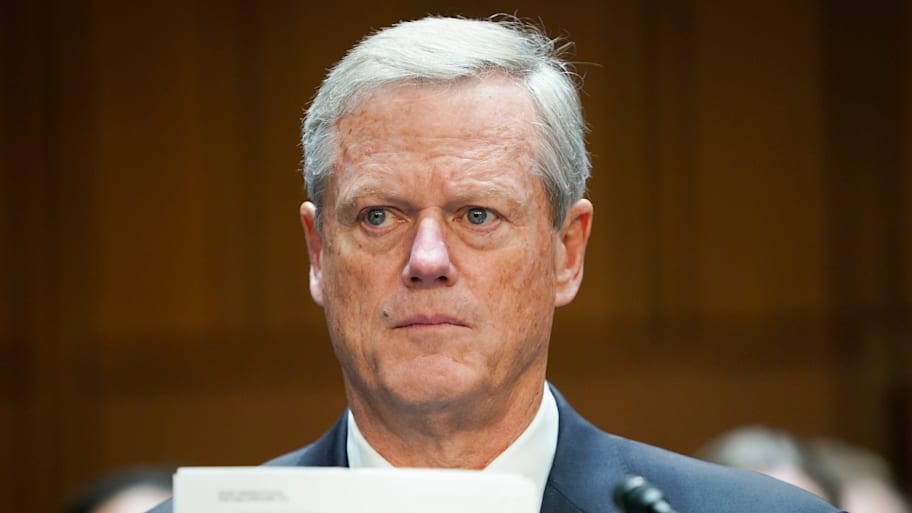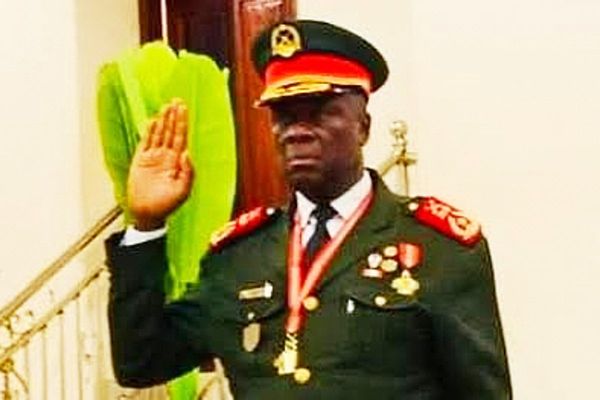
ORLANDO — The present state of college athletics can best be summed up on opposite ends of a long, humid hallway at the world’s largest Marriott hotel.
In one tucked-away conference room, dozens of athletics directors and school administrators file in and out of a presentation by consulting firm Deloitte. Amid furious scribbling of notes and a slew of phone snapshots, they arrived to gather their first glimpses of the NIL Go, a soon-to-launch platform designed to capture details of athlete endorsement deals and, thanks to the recent House settlement, approve or flag them to other authorities.
A half hour later down the hall, thousands more gathered to hear NCAA president Charlie Baker speak publicly for the first time since U.S. District Judge Claudia Wilken gave final approval to the settlement. Some are eager to hear what he has to say in the wake of the historic moment for the association, curious if he will take a victory lap for getting a $2.8 billion deal over the finish line.
This being college athletics, though, Baker must first pause for an advertisement from a healthcare company, a short video that the ex-Massachusetts governor quips is the strangest introduction he’s ever had.
He better get used to it.
The onset of the House settlement is not only a seminal moment in the enterprise—athletes will be paid directly starting on July 1—but an accelerant thrown on the pursuit of cash that always underpinned college athletics. Now, that chase has become more important than ever with the addition, even for smaller schools, of a seven-figure expense line on the yearly budget.
“It creates a future that comes with choices, instead of bankruptcy. The fact that this decision comes only a few days before it goes live is challenging. Change of this scale is going to be hard, and the transition will be rocky,” Baker said. “No one gets everything they want in a settlement.”
“We’re building the plane and flying the plane at the same time,” Northern Illinois Huskies athletic director Sean Frazier added later. “It’s so important to make sure that we keep the main name, the main thing. And for me, it’s about the student-athlete experience.”
Like many of the changes that have been forced upon the NCAA in recent years, the House settlement has been externally driven. While it is not technically a loss in the courtroom, it certainly feels like one given the price tag and amount of foundational change it brings.
All week, administrators at nearly every level have shared stories—comiserating, really—about the past few months of rushed planning and contingency making that has been unlike any other period in college sports, save perhaps for the COVID-19 pandemic.
“College sports needs stability as we modernize,” Baker said. “The complexity of the current model clearly had something to do with how hard it was for the NCAA to make necessary changes on a timely basis.”
Baker describes the House settlement as the third-biggest event in college athletics’ history alongside the creation of Title IX and the foundation of the NCAA over a century ago.
It certainly is foundationally, with the veneers of amateurism fully shed to the point where checks bearing school logos will go directly to athletes in three weeks. It won’t be for books or board either, but rather pay for play in everything but name.
While such matters dominated the discourse, it has also obscured the next fight that is set to reshape the NCAA.
This time it’s internally driven and is just as controversial as paying players once was. It is set to alter the way decisions are made by giving more power to schools in the Power (or Autonomy) 4 conferences.

According to a trickle of updates that filtered out of a working group addressing the matter, it will no longer be one school or one conference holding the power to cast its vote on pieces of legislation. In some cases, they won’t even be in the room to hear the discussion.
In one example, the current Division I Council that is largely responsible for the broad strokes of running major college sports at the national level would go from having a total of 40 representatives—including one for each conference from the SEC to the Big East to the Ohio Valley and beyond—to a panel of just 24 with a vote. FCS conferences would have just three members with one vote each, while the ACC, Big 12, Big Ten and SEC would get two each via weighted voting.
Should any of those four power leagues decide on a piece of legislation together, it could pass despite the rest of Division I opposing it. If three of those conferences voted yes on something, they would need just a single other vote from another representative to overcome a holdout among the power conferences.
In addition, nearly 30 committees would be axed and the Division I Board of Directors tasked with long-term oversight of the enterprise would see a similar shift in power to the leagues who are already rich and powerful.
“The group of 18 that’s part of the working group that’s talking about this stuff has had what I describe as some pretty frank and pretty positive and pretty constructive conversations,” Baker says. “It’s my hope that I’ll get to the point where they can make a recommendation to the board sometime this summer.
“I’ve spent my life around complicated decision-making models, but I’ve never worked in one as challenging as the one we have today.”
Some athletics directors at non-power schools called it a blatant power grab. Commissioners told anyone within earshot that it’s even worse than that, with some choice words for colleagues further up the food chain on the end-around being put in place that could tamper their voice at the table.
“I think if I put myself back 16 years ago and I’m the athletic director at Maine at the time, I think I’d recognize the reasons for it, and I would be positioning myself to take advantage of the system we’re in and again,” Boston College Eagles athletic director Blake James says. “I don’t know that I would be happy, but I would understand the thought behind it and then understand the system and go forward and execute to the highest level we can.”
Perhaps worst of all for some at smaller schools, is that it comes on the heels of the House settlement that heaped additional financial responsibilities on them and will further entrench the haves and have-nots in college athletics.
Soon, not only will Power 4 teams share $20.5 million with their athletes as others will scratch and claw their way to a tenth of that (at the optimistic end), but they’ll potentially be able to vote through changes to the NCAA itself with little to no consultation amid a consolidated decision-making framework.
“Our kids are lining up to win the game. It’s not, ‘Gosh, we’re so fortunate to be here.’ That’s where you lose me when you start treating me or us like that,” South Dakota athletic director Jon Schemmel says. “Some of the things I’ve heard about the working group is they’re not taking votes and it’s a discussion, and then all of a sudden there’s an email that goes out with a recommendation that was agreed upon that nobody voted on. So clearly a person or a couple people are doing what they want and that’s what we’re all reading. That’s pretty disappointing and somewhat shocking to hear. That’s where I get irritated.”
Baker is aiming to have something in front of the various boards overseeing the matter by the middle of next month and is hopeful that the pitch to streamline decision making resonates more broadly.
Others are more hopeful the entire exercise can pause, with the dizzying amount of change impacting every school in Division I.
“They can’t even agree on something basic like [a College Football Playoff format],” one commissioner said. “I don’t know, I could be proven wrong. I’m not a fortune teller. I still have never gotten a good explanation from anybody, honestly beyond the marketing, why do you really need this?”
Indeed, autonomy schools already have a modified process that allows them to pass new rules and enact changes impacting their own schools for years. It was created in 2014 and allows the Power 5 leagues (adding in the Pac-12) to create rules for themselves that others could adopt if they wanted but did not force them to follow. But it has been rarely used—mostly because the power conferences couldn't agree on changes in unison whenever it was considered.
Still, the times are changing and the pursuit of more has been supercharged in this bold new area for college athletics.
“We’ve spent years trying to outrun the bill collector,” one athletic director joked. “Now the bill collector is the athletes.”
No wonder the cost of doing business, including those ads leading into speeches, keeps going up.
More College Sports on Sports Illustrated
This article was originally published on www.si.com as After the House Settlement, the Next NCAA Fight Is Just Beginning.







